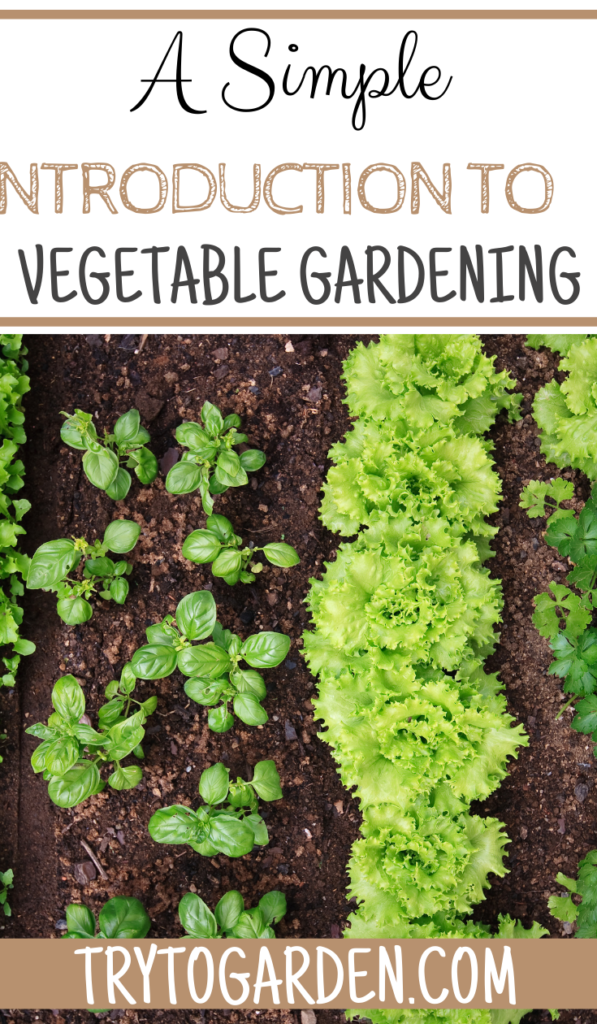This post contains affiliate links, which means I will make a commission at no extra cost to you should you click through and make a purchase. As an Amazon Associate I earn from qualifying purchases.
There are many reasons why people decide to pursue vegetable gardening as a hobby. Some people feel it’s a relaxing way to lower their stress levels. Some people just enjoy growing their own food. An introduction to Vegetable Gardening just makes sense.

Others get satisfaction from knowing that they know where some of their food is coming from. No matter what your reasons for wanting to take up vegetable gardening, it’s a very rewarding hobby.
Some people even choose to try to make some money with their vegetable gardening. You can make a little extra money by selling your vegetables at a local farmer’s market or roadside stand, or you can try to sell your produce to a local health food store or restaurant.
After the introduction of COVID-19, many people are looking at gardening as a way to guarantee their food security. Panic shoppers cleared shelves and made it challenging for the average family to put decent meals on the table.
Introduction to Vegetable Gardening
When you’re planning your vegetable garden, you need to decide how large you want your garden to be. You may be tempted to buy dozens of different vegetables and all sorts of varieties, but this may be more work than you’re really prepared for.
How to get started
First, you should make a list of all of the different vegetables you’d like to plant. Write down anything that comes to mind. Don’t worry about whether or not you’ll have time to plant or take care of something, or whether you can afford it, just write down everything you’re interested in.
Narrow it down
Once you’ve completed your list, you’ll start narrowing it down. The first step to narrowing your list down is to eliminate anything that you can get locally at a reasonable price. Potatoes and cabbage, for example, are usually very inexpensive in most locations.
I look at peas and realized I can get canned peas for $0.49 a can consistently. For me to plant, grow, harvest, and can them, I simply can't compete. Black Eyed Peas? I love them but just nope.
Potatoes are another gem that is thrifty at the stores - a five-pound bag often on sale for about $1.49. If you really want to do them, go with fingerling or other unique types and grow them in bags or containers. Yum!
Is it worth growing?
Then you should eliminate anything that you can get locally that won’t see a significant improvement in flavor over the store-bought version. Again, cabbage and potatoes probably won’t taste significantly different if you grow them yourself.
What you want to have on your list is the produce you can’t get locally, is generally too expensive to purchase, or would taste significantly better when grown in your own garden. For example, you may choose to grow fresh herbs because they are very expensive in stores.
Tomatoes are incredible right off of the vine. SO much better than the hothouse forced to ripen orbs from the store. It really can be extremely difficult to find tomatoes that taste good in stores. And you might want to grow a variety of specialty lettuces that are hard to find locally or are generally a bit expensive. That fresh salad is often incredible!
Consider the size of your garden
Most people can’t handle caring for a very large garden. It is hard work. It can be very relaxing, but it can be back-breaking work in unbearable heat. You have to contend with dirt, bugs, heat, bending, lugging, pulling, hoeing, and weeding.
Raised garden beds or even pallet gardens are great options over digging up the soil and getting out a rototiller. Not only are they easier on your back, but they also make square foot gardening beyond simple. That is how I usually work - and have a great yield of produce.
It can be miserable work if you create a garden that is larger than you’re prepared to handle. If you go overboard, your fascinating hobby can quickly turn into a nightmare. So be sure to choose only those varieties which you really believe you’ll enjoy, and which you can’t easily find locally.
If you only eat peas once per month, don’t plant a whole row! If you detest tomatoes, don’t plant them just because you think you should for some reason. Some people plant things they think look pretty in the seed catalog, even though they know they won’t enjoy the produce!
Keep it simple
Be careful not to get carried away. It’s tempting to plant one of every variety of tomato, or six different kinds of peppers. Those seed catalogs are beautiful, but keep it realistic! You can try a gardening journal to track what you did, what worked, what didn't, and what you want to try in the future. I just happen to have a pretty detailed one in our Etsy Shop. Take me to your garden journal!
Other articles you may find helpful:
- How To Grow Spinach Indoors: A Beginner's Guide
- How to Use Old Tires in a Garden
- How To Grow Tulips Indoors
- Avoid Plant Damage: How To Safely Use Mushroom Compost
- 7 Tips for Gardening With a Bad Back

